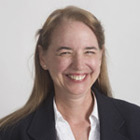Chicago, IL
April 16–20, 2015
Conference Website
The 2015 AERA Annual Meeting theme – “Toward Justice: Culture, Language, and Heritage in Education Research and Praxis” – is a call to examine the meaning of culture, language and heritage in education research and praxis with the aim of advancing justice. We have the opportunity and the moral obligation to apply principles and evidence from social science research and theorizing to the problems of injustice. How do various communities conceptualize justice, including the many scholarly communities within our association?
Friday, April 17
 Developing and Implementing Instructional Materials to Support Students’ Understanding of Electrical Forces and Interactions
Developing and Implementing Instructional Materials to Support Students’ Understanding of Electrical Forces and Interactions
Jane Lee (Michigan State University), Kristin Mayer (Michigan State University), Lora Kaldaras (Michigan State University), Chanyah Dahsah (Michigan State University), Shawn Stevens (University of Michigan), Daniel Damelin (The Concord Consortium), Frieda Reichsman (The Concord Consortium), Steven McGee (The Learning Partnership), Joseph S. Krajcik (Michigan State University)
10:35 AM–12:05 PM, Sheraton, Ballroom Level, Sheraton IV
Understanding electrical forces and interactions is important for explaining and predicting diverse phenomena such as the boiling points of substances and the folding of proteins. It is related to disciplinary core ideas in the Framework for K-12 Science Education and Next Generation Science Standards. However, most students do not develop understanding of these ideas and how they relate across disciplines. Therefore, it is important to explore how to support students in developing understanding of electrical forces and interactions by developing new instructional materials and teaching strategies. The goal of this project is to design, develop and test coherent interdisciplinary instructional materials to support all high school students in developing understanding of electrical forces and energy involved in interactions at the microscopic level.
 Sensing Science: Assessing K-2 Students Readiness for Reasoning with Kinetic Models of Heat using Dynamic Visual Representations
Sensing Science: Assessing K-2 Students Readiness for Reasoning with Kinetic Models of Heat using Dynamic Visual Representations
Elham Beheshti (Northwestern University), George Forman, Carolyn Staudt (The Concord Consortium), Nathan Kimball (The Concord Consortium), Jamie Broadhead
2:15 PM–3:45 PM, Sheraton, Fourth Level, Chicago VI & VII
In this paper we present findings from our two-year study on the preconceptions young children (4 to 8 years old) hold in regards to the nature of temperature and heat and how their use of visual representations can improve their interpretation of temperature and heat. We use the word preconceptions to indicate the naïve ideas that children hold before formal instruction. Although thermodynamics does not appear in the science curriculum until middle school in the Next Generation Science Standards, our goal is to see if much younger children could explain concepts of temperature and heat. We hypothesize that the use of visualizations of heat concepts that emerge from interactions between the particles can serve as a better “tool for thinking” to help K-2 students better understand those concepts. Our findings suggest that young children can use the kinetic heat model to explain and disambiguate their current theories about temperature and heat when aided by real-time visualizations that form a progression of ideas towards scientific theory.
Sunday, April 19
Teaching Environmental Sustainability with a Watershed Modeling Curriculum
Nanette I. Marcum-Dietrich (Millersville University of Pennsylvania), Susan E. Gill (Stroud Water Research Center) & Carolyn Staudt (The Concord Consortium)
12:25 PM–1:55 pm, Swissotel, Lucerne Level, Lucerne III
The study investigates whether a watershed-modeling curriculum is an effective tool for increasing students’ understanding of watersheds and the impact of human decisions on local watershed conditions. While statistically significant learning gains were measured, most students failed to reach the highest levels of watershed understanding. Further refinement of the curricula is needed to help students trace water along multiple pathways and to enable them to trace the connections among groundwater, surface water and atmospheric water vapor.
 Sensing Science: Assessing K-2 Students Readiness for Reasoning with Kinetic Models of Heat using Dynamic Visual Representations
Sensing Science: Assessing K-2 Students Readiness for Reasoning with Kinetic Models of Heat using Dynamic Visual Representations